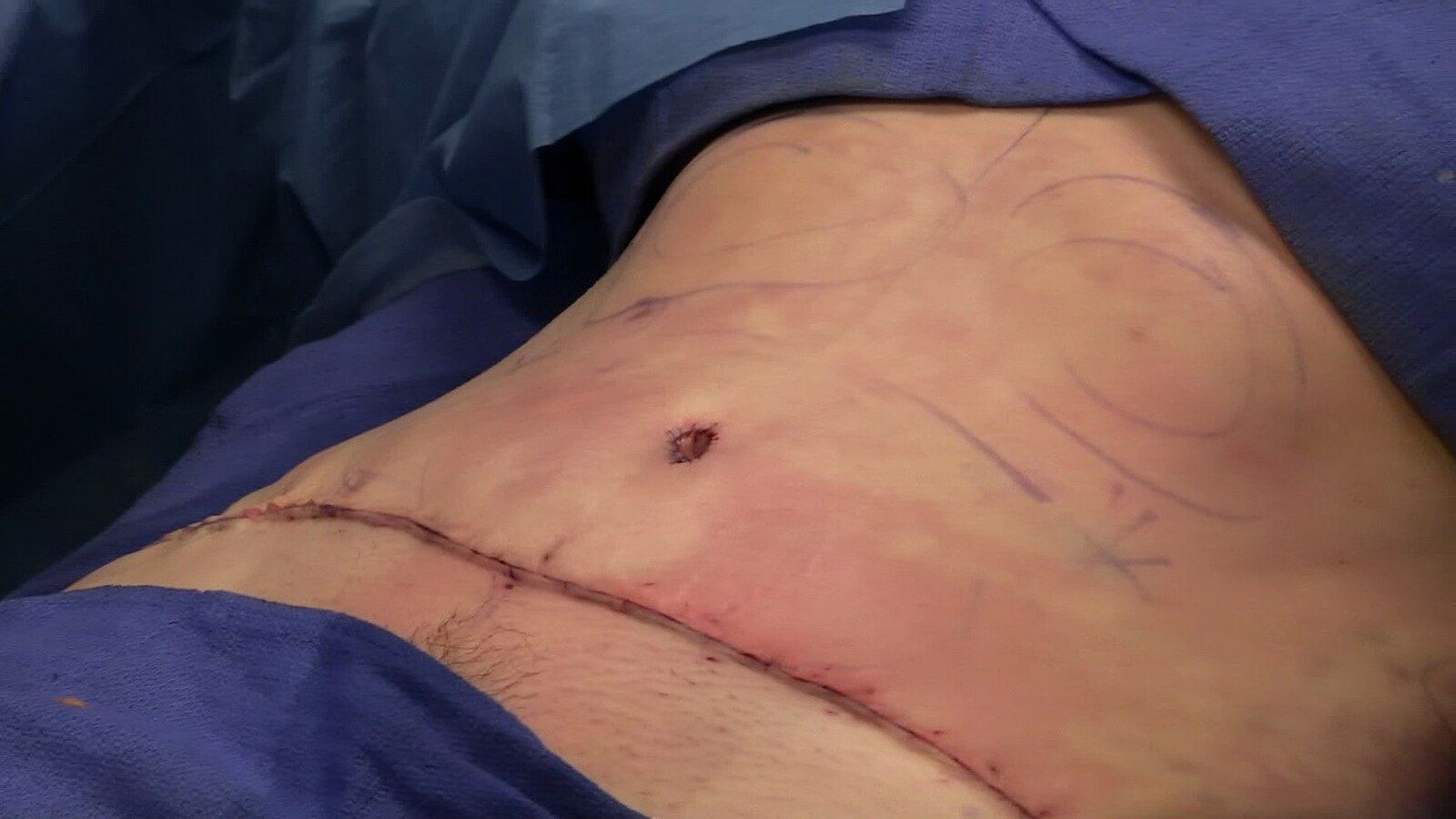Anterior Lumbar Interbody Fusion, or ALIF, was the first spinal fusion surgical procedures developed, using bone grafts and cage hardware to treat degenerative disc disease, spinal stenosis, disc herniation, spondylolisthesis, and other conditions that cause chronic back pain. While ALIF can provide pain relief, it carries significant complications and risks.
Let’s start by defining ALIF terminology that will be referenced in this article:
- Anterior: this means “situated in the front”.
- Lumbar: refers to the lower back.
- Interbody Fusion: refers to the process of joining two or more vertebrae together using bone grafts or implants.
- End plates: bone and cartilage that form the interface between the vertebral discs, protecting them and providing structural integrity.
- Cage: a metal spring that is filled with cadaver bone and used for grafting
- Bone graft: the implanting of bone material to stimulate new bone growth.
- Lordosis: the natural inward curve of the spine; this is lost with degenerative disc disease and other conditions.
- Adjacent segment disease: this occurs in the vertebrae that are adjacent to the fused discs, which have been drilled into to place hardware, degrade and become painful.
- Rectus Abdominis muscle: the six-pack" muscle at the front of the abdomen, extending from the ribs to the pelvis.
What is ALIF?
ALIF is a highly invasive spinal fusion procedure used to treat lower back pain, focused on lumbar vertebrae L4-L5, by approaching the spine from the front and fusing the affected vertebrae together to eliminate pain
The ALIF technique was developed to allow full access to the spine and the diseased vertebral joints. This frontal approach provided large working field for the surgeon, who would remove damaged or diseased disc material and replace it with a metal cage. The metal cage was screwed into the healthy adjacent vertebral end plates above and below the affected discs. The outcome of this fusing was the development of a single, solid bone structure, reducing movement, thereby decreasing pain, improving stability, restoring lordosis and disc height that may have been lost due to degenerative disc changes.
How an ALIF is Performed

ALIF surgery usually takes two to four hours and done under general anesthesia with the patient lying on their back.
The surgeon makes a large 7-10" incision into the rectus abdominus muscle of the opening up belly; to expose the spine the internal organs and intestines are moved to the side, and the parasympathetic and sympathetic nerves that run in front of the spine are cut. Because major blood vessels are also present, a vascular surgeon is required to help ensure the aorta and iliac vein are not inadvertently damaged.
With the spine exposed, the surgeon removes the damaged disc material. and preps and drills the healthy vertebral surfaces and places the cage. The organs, intestines are moved back, and the belly is sewn up and closed.
The 5 Reasons to Avoid an ALIF
- Complications that cause Permanent Damage
There are a number of complications that manifest days or weeks after an ALIF surgery that can cause permanent damage:
Bowel perforation: moving the intestines aside is complicated and the smallest of nicks can result in bowel infection, peritonitis, and possible death.
Blood vessel tearing: the accidental nicking of the aorta and/or iliac vein will ultimately result decreased circulation to the leg/s; over time this decreased blood flow with cause gangrene to set in and amputation will be required.
Splicing a ureter: cutting a ureter (tubes that drain your kidneys) happens often during an ALIF. The kidney/s are not able to drain, become infected and must be surgically removed.
- Post-operative ileus :
Postoperative ileus occurs in almost 100% of ALIF patients because of the having to move the intestines. It is a temporary paralysis of the gastrointestinal tract and characterized by a lack of bowel movements, abdominal pain, nausea, and vomiting. Depending on the length of recovery, recover, many patients will suffer from impacted bowels.
- Permanent sexual dysfunction
The parasympathetic and sympathetic nerves that in front of the spine are cut to place the cage to fuse the spine. These nerves are control sexual function and 100% of ALIF patients with suffer from the inability to achieve an erection (for men) or loss of orgasm (for women); addition men will experience retrograde ejaculation which is the semen backing up into the body.
- Long (6 months +) Recovery with Severe Pain
Cutting the rectus abdominis muscle is highly invasive and a trauma to the body. Patients are not able to move as that muscle is needed for any type of activity, from sitting up, to just shifting your weight. The pain is so severe patients must be put on narcotic drip using a PCA (patient controlled analgesia) that in most cases contains morphine. Not only is the addiction potential high, one of the side effects of any opioid is constipation, which worsens post-operative ileus and increases the potential for impacted bowels.
- Loss of natural spinal movement
Fusion because it immobilizes the spine, always reduces the natural movement of your back. The higher the number of vertebrae fused, the greater loss of movement. This lack of movement and the placing of metal hardware and cages into the healthy vertebrae above and below the affected disc, places increased pressure on those bones which can degenerate more quickly, resulting in adjacent segment disease (ASD). ASD is characterized by localized back pain, radiating pain into the arms or legs (like sciatica), and neurological symptoms such as numbness, tingling, or weakness in the extremities. Patients may also experience increased stiffness, a reduced range of motion, or even new problems like disc degeneration or instability near the fused area. All of this leads to more surgeries and increased back pain.

The ALIF Alternative
ALIF surgery carries permanent complications that can never be reversed. At Deuk Spine institute we treat back pain at its source, going beyond traditional fusion, using our proprietary endoscopic laser procedure Deuk Laser Disc Repair (DLDR).
DLDR offers a cutting-edge alternative for any fusion surgery; we use laser technology to repair the annular tear in the back of a disc, which is the cause of pain. Using only a 4mm incision, our DLDR is performed without cutting or damaging healthy muscle, fascia, or bone, without using risky hardware, and without post-operative pain. It is done in our facilities in an outpatient setting, takes one hour and patients are living a pain-free life in just one day.
We believe in providing complete transparency about our laser spine surgery procedures by livestreaming our surgeries with our patient’s consent. Our 99% success rate is backed by numerous patient testimonials who have had their lower back pain cured.
Take the next step in living-pain free. Schedule a ten-minute consultation with me, Dr. Ara Deukmedjian, M.D., together we will review your MRI and discuss the best options to help you reclaim your life.

